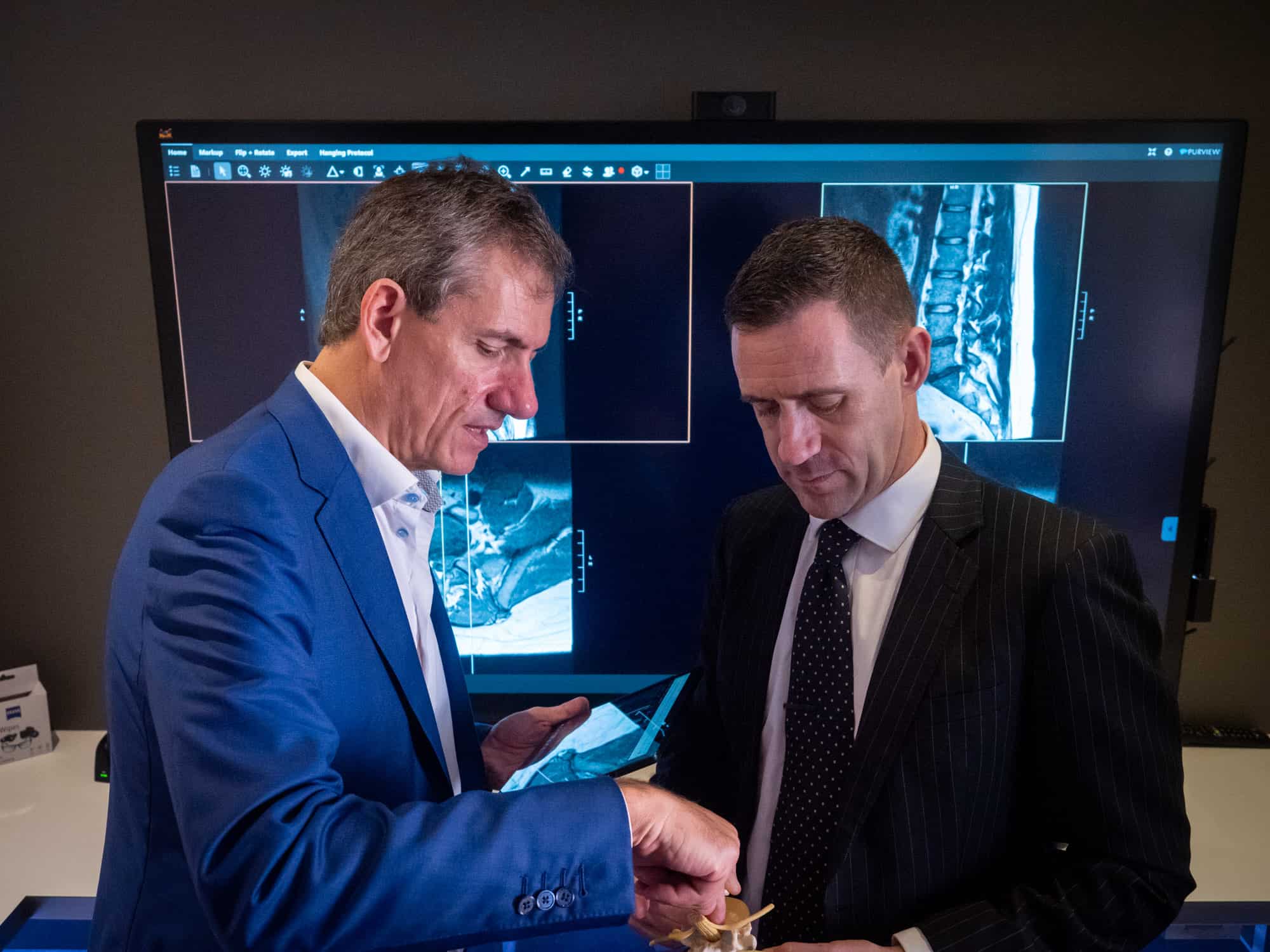Overview
The facet joints are often the primary source of pain for many back or neck pain sufferers. Facet joints are small articulating joints located in pairs at the back of each vertebra of the spine. They provide stability to the spine and allow the spine to move and be flexible.
What is a Facet Joint Injection?
A facet joint injection is a minimally invasive procedure which has two purposes. It can be used as a diagnostic measure to determine whether a particular facet joint is the source of pain or it can be used therapeutically to provide ongoing relief lasting from days to months for pain caused by inflamed facet joints. The injection includes both a long-lasting corticosteroid (e.g. Celestone) and a long-lasting slow acting local anaesthetic (e.g. Bupivacaine or Marcaine). Under CT guidance, the medications are injected either inside the joint capsule or into the tissue surrounding the painful facet joint.
How is it done?
The procedure is usually performed by an interventional radiologist or pain specialist. You will be awake during the procedure and lying face down or on your side. The skin will be cleaned and some local anaesthetic injected. Under continuous CT monitoring, a needle will be passed down towards the facet joint space. Once it is in the correct position, the medication is injected and if the facet joint is the source of pain, the pain will decrease. The needle is removed and a Band-Aid applied. The procedure takes from 20-30 minutes.
You will be given a questionnaire to complete. This pain diary is important as it will help you remember exactly what effect the injection had in the first few days so you can discuss it with your doctor at the next visit.
You will be able to walk immediately after the procedure although you may experience leg weakness or tingling for several hours. Once you are assessed as being safe to go home, you will be discharged. You will need someone to take you home as you will not be allowed to drive for approximately 12 hours after the procedure. Typically, you may resume your activities on the following day.
What are the risks?
Facet joint injections are considered to be very safe procedures when done by experienced personnel. Potential but rarely occurring complications are infection, allergic reaction to one of the medications and headache. Some patients may report a temporary exacerbation of pain lasting a few days after the injection. Although the steroid is only slowly absorbed by the body, sometimes it can affect the control of diabetes and cause a transient rise in blood sugar levels. It can also affect control of chronic heart problems, such as heart failure and fluid retention. You should notify the radiology department if you are taking any blood-thinning medication. If you have any concerns about complications, you should contact the Radiology Department where the procedure is to be undertaken and talk to the medical or nursing staff.
What are the results?
Most patients report immediate temporary pain relief due to the local anaesthetic. After the effects of this have worn off (typically 6 – 12 hours), pain will return. Many patients notice pain relief commencing within a week or two after the injection due to the steroid component. Overall, 50% of patients experience good temporary pain relief. More than ½ of these experience good long-term pain relief of up to 1 year.
If you don’t experience any pain relief, further therapeutic injections won’t be helpful.
If you experience good long term relief, the injections may be repeated. If you experience good short-term relief but suffer recurrent back or neck pain, you may be a candidate for a facet joint neurotomy or ablation. This procedure is typically performed by a pain specialist and preparation is similar to that for a facet joint injection. During this procedure, an electrode is passed through the skin to the sensory nerves surrounding the facet joint. Once the electrode is in the correct position, a radiofrequency heating current is applied to deaden the nerve fibres that carry pain signals to the brain. If effective, the treatment should provide pain relief lasting at least 9-12 months and at times, much longer. The nerves will eventually grow back (regenerate) but the pain may or may not return. If the pain returns, you may have the procedure repeated.
